History of the Mineralogy Museum in Wrocław
Mineral collecting at the University of Wrocław started with the establishment of the Mineralogical Cabinet in 1812. Its management was entrusted to Karol von Raumer, who was concurrently appointed professor of mineralogy at the University of Wrocław.
At first, the Cabinet received the decomposed mineral collection of the Higher Mining Office in Wrocław. From this collection, a smaller subset was created for teaching purposes and placed in rented premises.
Further development of the Mineralogical Cabinet occurred in 1815 when the mineral collection of the well-known collector Mender of Freiberg was purchased for 4,000 thalers. This collection, according to the testimony of contemporaries, was of great scientific value, and among private collections in Freiberg, it was undeniably considered second only to the collection of the ‘father of geology,’ A. G. Werner. The collection of minerals from the Ore Mountains was particularly valuable within the purchased collection.
The Mineralogical Cabinet’s collections continued to grow, and in 1815, the university authorities allocated five rooms for it in the existing building of the Convent boarding school at 35 Kuźnicza Street. Prof. K. Raumer, after serving as director of the Mineralogical Cabinet for eight years, moved to Halle in 1819. Following his departure, the direction of the Cabinet was assumed by the well-known philosopher and naturalist Henry Steffens, a Norwegian by origin, who, being a professor of physics, also taught mineralogy. In 1833, Ernest Friedrich Glocker, a professor of mineralogy, took over the management of the cabinet. He led it until 1855 when Prof. Ferdinand Römer was appointed director of the Mineralogical Cabinet. During Prof. Glocker’s tenure, mineralogical sciences at the University of Wrocław flourished, as evidenced by the first habilitations in mineralogy. Glocker himself discovered several new minerals. Also in his honor, C. F. Naumann in 1855 named a siderogel containing adsorbed H2SO4 ‘glockerite’. Today, the mineral has been discredited.
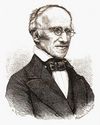
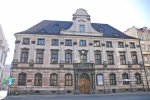
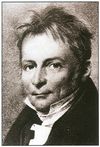

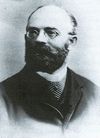
Lehman
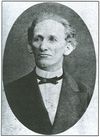
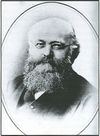
Websky
During his 32-year tenure (1855-1887), Prof. F. Römer significantly expanded the mineralogical collections. He made a notable stride by introducing a paleontological section alongside the existing ones. In 1856, this new section welcomed, among other acquisitions, a compilation of Silurian fossils originating from the Oleśnica area, amassed by the pharmacist Oswald. In 1857, a collection of Carboniferous plant remains was acquired as a bequest from a master miner Bocksch, who died in Wałbrzych. Ten years later, the Higher Mining Office in Wrocław enriched the museum with a collection of fossils and rocks from the Lower Silesia region. Prof. Römer himself contributed to the collection by donating fossils he had collected during his travels to North America, Scandinavia, Russia, and various other countries. Additionally, in 1863, the collection underwent significant enhancement through the acquisition of minerals from the personal collection of the teacher Rennschmidt.
To commemorate the 50th anniversary of the University of Wrocław in 1861, the director of the cabinet was assured new premises, as the existing ones within the building of the Convent boarding school had proven inadequate. However, it was not until 1866, following the construction of a new building overlooking the Oder River, that this promise was fulfilled. Its highest floor was designated for the Mineralogical Cabinet. The establishment of the museum in the new space saw the significant contributions of renowned mineralogist Prof. Martin Websky (1824-1886) and curator Dr. Hans Fiedler, the author of the first monograph on the minerals of Lower Silesia.
M. Websky’s pivotal role included curating the mineralogical exhibit and amassing a collection of Silesian minerals, a substantial portion of which he personally gathered during his long-term involvement in mining. Subsequently, he generously bequeathed these to the museum. Prof. Römer’s tenure also witnessed the habilitation of several eminent mineralogists at Wrocław, who would later garner prominence. This group included Martin Websky, Arnold Lasaulx, Andreas Arzruni, Johannes Lehmann, and Carl Hintze.
Following F. Römer, the position of director was assumed in 1892 by Prof. Carl Hintze, a distinguished mineralogist, who simultaneously taught mineralogy and crystallography at the university. In acknowledgment of C. Hintze’s contributions to global mineralogy, particularly his monumental work “Handbuch der Mineralogie” (comprising 5,000 printed pages), a newly discovered mineral with the chemical formula Ca2AlF7xH2O was named carlhintzeite in 1878.


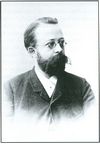
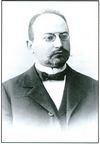
The collections of the Wrocław Mineralogical Museum gained widespread recognition across Europe, and prior to World War I, they were a frequent destination for Polish visitors. Stanisław Małkowski, who accompanied Prof. Józef Morozewicz as an assistant on a student excursion to the Sudetes before the war, described his visit to the museum as follows: “This last trip included a visit to the famous collections of the mineralogical department of the University in Wrocław, which were personally demonstrated to us by Hintze himself, who recounted with great humor his successes in expanding them. These successes involved skillful ‘acquisition’ of various exemplary specimens from other collections, against the owners’ wishes. It was a kind of sport practiced by some passionate collectors and museum curators. In addition to the jovial Professor Hintze, Assistant Professor Beyschlag, and assistants, our excursion was accompanied by janitors who approached us when, at Hintze’s command, the display cases were opened.”
In 1871, the Mineralogical Cabinet was renamed the Mineralogical Institute of the University of Wrocław. From 1880, the name of the institute was changed to the Mineralogical Museum of the University of Wrocław. Then, starting from 1897, there was a separation and establishment of new scientific departments, namely the Mineralogical Museum of the University of Wrocław, the Mineralogical Institute of the University of Wrocław, and the Geological-Paleontological Institute of the University of Wrocław (with Prof. F. Frech being its director).
From 1897, Prof. C. Hintze assumed the roles of both the director of the Mineralogical Museum and the reinstated Mineralogical Institute. The paleontological collections were transferred to the Geological-Paleontological Institute.
In 1901, the Mineralogical Institute and Museum were reestablished. During Prof. Hintze’s leadership, notable individuals such as Dr. Ludwig Milch and Dr. Artur Sachs habilitated in Wrocław, becoming professors from 1900 to 1925. After Prof. Hintze, Prof. L. Milch assumed the directorship of the Institute in 1917.
In 1918, the Mineralogical-Petrographic Institute was established without separating the museum. The name evolved to the Mineralogical-Petrographic Institute and Museum in 1928. Finally, in 1929, Prof. K. Spangenberg became the head of both the institute and the museum, holding this position until 1945.

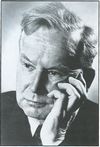
At the end of World War II, the University’s most valuable mineralogical collections were evacuated from Wrocław. This careful action was taken to shield them from the potential destruction that the city, caught in the turmoil of wartime activities, might have suffered. The majority of these collections found their safe haven in the Church of St. John and St. Catherine of Alexandria in Świerzawa, as well as in the Church of Saints Peter and Paul in Strzegom.
Shortly after the liberation of Wrocław in 1945 and the establishment of Polish authority over the Piast lands (Recovered Territories), thanks to the strenuous efforts of Prof. Kazimierz Maślankiewicz, head of the Department of Mineralogy and Petrography at the University of Wrocław, which was established in 1946, and Assistant Professor Edward Zubik, later dean of the Faculty of Natural Sciences at the University of Wrocław, the collection stored in Świerzawa was brought to Wrocław. Unfortunately, the part of the mineralogical collection taken to Strzegom did not come back. Instead, it was transported to Warsaw and became part of the collection at the Museum of the Earth of the Polish Polish Academy of Sciences.
Initially, the mineralogical collections brought back to Wrocław were stored in the premises of the former School of Construction Crafts at 53 B. Prusa Street, which now houses the Faculty of Architecture at Wrocław University of Science and Technology. Despite local challenges and a shortage of staff, the process of unpacking, organizing, and cataloging the collections commenced. This vital work was undertaken by Assistant Professor Zofia Pentlak, who held the position of curator of the collections from 1947 to 1948. Her efforts led to the preliminary arrangement of a segment of the collection and the establishment of a small auxiliary collection intended for educational purposes. With few exceptions, the mineral collection stored in drawers and crates was restored to Wrocław in sound condition. The original inventory records were generally linked to individual specimens as well. The only minerals that could not be reclaimed were the salt minerals, which had suffered damage due to a lack of protective measures. Due to space constraints in the building on B. Prusa Street, the minerals were not exhibited.
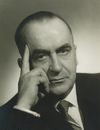
Maślankiewicz
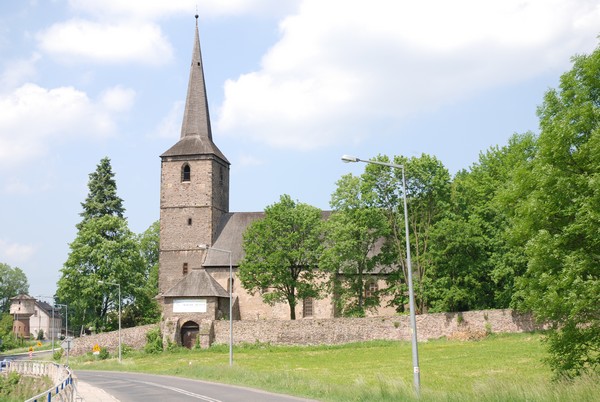
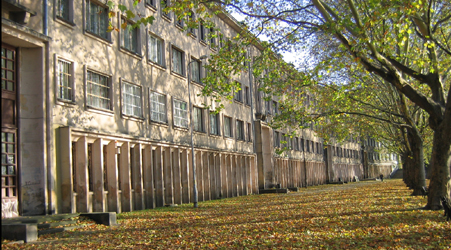
In 1952, the Department of Mineralogy and Petrography, like other geological departments, was moved to the building on Cybulskiego Street, where it still occupies part of the rooms in gate 30. Simultaneously, the collections were transported to this new location and were allocated roughly 300 m2 of space on the ground floor between gates 32 and 34. The endeavor of relocating these collections, which consisted of approximately 20,000 specimens, demanded substantial effort. Nevertheless, by 1952, an initial mineral exhibition was curated with a focus on university instruction. This exhibition displayed around seven hundred selected specimens and was situated in the corridor that would later become part of the museum. It was organized by Dr. Bogusław Bereś and Edward Lis, MA.
Until 1961, the organization of the collection was sporadic. Dr. Maria Witkiewicz, who had been associated with the University of Wrocław since November 1945, initiated a systematic sorting process and the preparation of explanations in Polish for specimens intended for display. Dr. Andrzej Grodzicki, now a retired professor from the University of Wrocław, also contributed to these efforts during the early stages. Dr. M. Witkiewicz played a pivotal role in arranging the post-World War II mineralogical collections of the university. The establishment of a proper exhibition only began in 1964 when Prof. Kazimierz Maślankiewicz, then Vice-Rector of the University of Wrocław, successfully initiated a comprehensive renovation of the museum spaces. Michał Sachanbiński, MA, who then recently joined the Department of Mineralogy and Petrography, managed this renovation.
The opening and accessibility of the Mineralogical Museum, a part of the Department of Mineralogy and Petrography at the University of Wrocław, took place in June 1966, coinciding with the commencement of the 2nd Congress of the Association of Geology Alumni of the University of Wrocław. During this period, the museum was headed by Dr. Maria Witkiewicz.
Following Dr. M. Witkiewicz’s retirement in 1970, Władysława Majerowicz was engaged as a curator at the Mineralogical Museum, alongside student Janusz Janeczek (now a professor at the University of Silesia). In 1977, the museum’s leadership was entrusted to Dr. Michał Sachanbiński. Through the decision of the Rector of the University of Wrocław of 8 June 1981, the Mineralogical Museum was established as an independent department within the Institute of Geological Sciences, separate from the Department of Mineralogy and Petrography. Since then, it has functioned as the Mineralogical Museum of the Institute of Geological Sciences at the University of Wrocław, primarily focusing on the collection and accessibility of scientific mineral specimens for educational purposes. In the 1980s, the museum mourned the passing of three individuals who had significantly contributed to the history of mineralogical collections at the University of Wrocław. In 1981, Prof. Kazimierz Maślankiewicz passed away, followed by Mrs. Władysława Majerowicz. In 1983, Dr. Maria Witkiewicz also left this world.
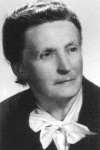
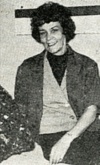
On 19-20 October 1985, the 9th Congress of the Association of Geology Alumni of the University of Wrocław was held in Wrocław. This occasion marked the official naming of the Mineralogical Museum in honor of Professor Kazimierz Maślankiewicz. This naming was a symbolic gesture from the scientific community and his students, acknowledging his exceptional contributions as a trailblazer and architect of Polish mineralogy in Wrocław.
In March 1994, a branch of the Mineralogical Museum was opened at 21/22 Kuźnicza Street, strategically located along the city’s central cultural and touristic route. This branch was designed not only for academic instruction but primarily for the broader community of Wrocław residents and tourists.
As of 1 December 1995, by the decree of the Rector of the University of Wrocław, a new organizational unit was established within the Institute of Geological Sciences: the Mineralogical Museum and the Gemmology Department. This unique combination of museum functions—housing a separate collection of gemstones for scientific, educational, and gemmological purposes—aimed to educate highly skilled specialists in the field of gemmology.
In July 1997, Wrocław was hit by a flood. Prompt measures were undertaken to evacuate the collections and display units from the Kuźnicza Street branch, thus safeguarding them from the floodwaters that had penetrated the primary exhibition spaces in the basement. Meanwhile, at the Cybulskiego Street location, where the university buildings stand almost by the Odra River’s course, the rising floodwaters reached the windows of the Museum. Fortunately, they did not enter the museum rooms, but they did infiltrate the basements, causing damage to the stored mineral specimens, equipment, and apparatus.
On 18 April 2008, a commemorative plaque honoring Ernst F.F. Chladni (1756-1807) was unveiled within the Museum’s branch, in the room that houses the permanent meteorite exhibition.
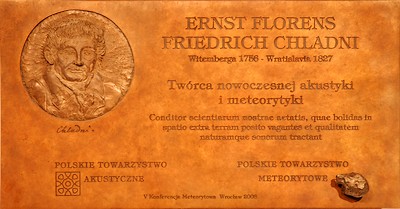
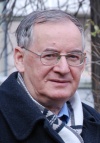
This prominent figure in global science during the late 18th and early 19th centuries had a profound impact, particularly in the fields of acoustic studies, meteorites, and the phenomena associated with their falls. As a result, he is internationally acknowledged as the Father of Acoustics and Meteoritics. In partnership with the Polish Acoustic Society and the Polish Meteorite Society, the Mineralogical Museum funded a commemorative plaque to honor his legacy. This plaque serves to recall his lectures at the University of Wrocław in 1807, his untimely and unexpected death, and to recognize his contributions to the worldwide scientific community. The unveiling of the plaque was preceded by the 5th Meteorite Conference of the Polish Meteorite Society, held in the Leopoldine Hall and the Institute of Geological Sciences at the University of Wrocław. Simultaneously, a temporary exhibition of meteorites from private collections of members of the Polish Meteorite Society was inaugurated, showcasing exquisite meteorite specimens including Świecie, Allende, Sichote Alin, as well as contemporary meteorites that have fallen or been discovered more recently, such as Bassikounou, Dhofar, and NWA.
31 August 2008 marked the end of more than thirty years of heading the Mineralogical Museum and the Department of Gemmology by Prof. Dr. habil. Michał Sachanbiński. As of 1 October 2008, the University authorities entrusted this function to Dr. habil. Prof. UWr Piotr Kazimierz Gunia.
On 12 March 2013, by decision of the Rector of the University of Wrocław, the Kazimierz Maślankiewicz Mineralogical Museum was established as an independent scientific unit within the structure of the Faculty of Earth Sciences and Environmental Management.
Contemporary collections of the Mineralogical Museum
The Kazimierz Maślankiewicz Mineralogical Museum at the University of Wrocław, the oldest of its kind in Poland, houses extensive mineralogical collections that rank among the largest in the country. These collections comprise over 27,000 specimens, including roughly 7,500 minerals sourced from within Poland, over 19,000 minerals originating from diverse global locations, 160 meteorites, and more than 400 gemstones. These collections encompass items from the pre-war museum holdings as well as acquisitions and donations made since 1945.
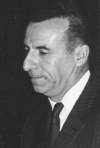
The Museum’s collections boast remarkable specimens, including holotypes and cotypes. Within its holdings, the museum preserves five holotypes, representing minerals that were first described globally. These include a sarcopside from Michałkowa in the Owl Mountains, described by M. Websky in 1868; a lüneburgite from Lüneburg in Germany, described by C. Nöllner in 1870; an aërenite from the Pyrenees, described by A. von Lassaulx in 1876; a strengite from the Eleonore mine in Dünsberg, Germany, described by A. Nies in 1877; and a jaskólskite from the Vena deposit in Bergslagen, Sweden, described by M.A. Zakrzewski in 1984. The collection also encompasses sixteen cotype specimens, including minerals such as ardennite, davreuxite, sarcopside, and stilpnomelane. The Museum is a registered member of the International Association of Mineralogical Museums and is featured in a guidebook highlighting the world’s most significant mineralogical museums, published at the turn of the millennium. Since its official establishment in 1966, the Kazimierz Maślankiewicz Mineralogical Museum within the Institute of Geological Sciences has greatly benefited from its pre-1945 collections, allowing for their systematic supplementation and enrichment. Numerous private individuals and institutions have contributed specimens. Notably, the collection expanded in 1955 through the acquisition of minerals from the “Wolność” mine in Kowary by Alfred Majerowicz, MA, the then-assistant of the Department of Mineralogy and Petrography (now Prof. at the University of Wrocław). A significant donation of Silesian minerals was received in 1979 from the Lower Silesia Branch of the Polish Society of Friends of Earth Sciences (PTPNoZ). Bank Zachodni S.A. also donated a collection of minerals from Strzegom’s pegmatites in 1995, acquired from collector Jan Finik. Generous contributions came from various collectors, including Swiss ones associated with the Swiss Society of Prospectors in Lucerne, who donated minerals from the Alps in 1995 and 1996. The Gold-Club of the Czech Gold Miners’ Club in Kutná Hora contributed a collection of Czech minerals. Notable exhibitions include “Minerals of Eastern Bavaria,” which opened on 10 November 2011, showcasing specimens donated by Norbert Klose. “Minerals of Pegmatites from Górna Piława,” opened on 23 May 2014, featuring specimens provided by the research team led by Prof. AGH Dr. habil. Eng. Adam Pieczka. The Museum also receives mineral specimens from employees of the Institute of Geological Sciences at the University of Wrocław, members of the Student Scientific Circle of Geologists at the University of Wrocław the Geological Services Laboratory “WROMIN,” and numerous collectors and private individuals.
The Museum’s current collections are organized into four sections: Minerals of the World, Minerals of Poland, Gemstones and Ornamental Stones, and Meteorites. The Minerals of the World collection comprises specimens from various global regions, totaling approximately 15,000 items. The Polish collection is systematically arranged and continuously enriched to create a comprehensive representation, particularly from western Poland. Highlights include a rich collection of minerals from the Lower Silesia region, including specimens from inactive mines in Stara Góra, Ciechanowice, Miedzianka, Kowary, and Złoty Stok. Additionally, there are collections of pegmatite minerals from Lower Silesian granitoids, as well as ore minerals from zinc and lead deposits in the Silesian-Kraków region. The museum also houses an impressive collection of Polish gemstones and ornamental stones. Its meteorite collection, comprising 153 specimens, stands as one of the country’s largest.
Exhibition and popularization of mineralogy
One of the crucial tasks undertaken by the Mineralogical Museum is to disseminate knowledge about minerals. Exhibitions play a fundamental role in achieving this goal, having always been the principal and distinctive means of promoting science within this institution. In its early years, the museum featured three permanent exhibitions in separate rooms. After the collections were made accessible again in 1966, the concept of both permanent and temporary displays was adopted in the building on Cybulskiego Street. The permanent exhibitions commence with a display titled “Minerals of the World,” aimed at acquainting visitors with the most significant minerals found on Earth. This exhibit showcases the most representative portion of the mineral collection gathered in the Museum and is primarily designed to serve the educational needs of geology students. The minerals are arranged according to the classification established by H. Strunz (1996) and A. Bolewski (1965). Over 1,100 minerals are displayed within 13 antique cabinets. The museum’s permanent exhibitions also include “Minerals of Poland” and “Minerals of Strzegom Pegmatites”.
At the branch of the Museum located at 21/22 Kuźnicza Street, there are permanent displays such as “Meteorites,” “Minerals of Poland,” “Gemstones and Ornamental Stones,” “Gemstones and Ornamental Stones – Krzemionki Group,” “Minerals of Strzegom Pegmatites,” “Agates of the Kaczawskie Mountains,” as well as temporary exhibitions.
In addition to exhibitions intended for the general public, scientific (specialized) exhibitions are also organized, presenting achievements in certain departments of mineralogical sciences. Since 1966, temporary exhibitions have been held, including ”Mineral Raw Materials of Lower Silesia,” ”Earth Seen from Space” jointly with the Museum of the Earth of the Polish Academy of Sciences in Warsaw, where a sample of basalt from the moon was shown, ”Polish Precious and Ornamental Stones,” and ”Minerals of Strzegom Pegmatites.”
The exhibition “Polish Gemstones and Ornamental Stones” received significant international acclaim and was successfully showcased abroad. Furthermore, when presented at the Polish Academy of Sciences Museum of the Earth in Warsaw, the exhibition received a recognition diploma from the Mayor of Warsaw. Starting from the 1990s, temporary exhibitions have become more prominent at the Museum. The branch frequently featured temporary displays of collections from other museums, private collectors, as well as the Museum’s own collections. Additionally, the Mineralogical Museum’s collections were temporarily exhibited in numerous cities across Poland and even beyond its borders, including Germany, the Czech Republic, and Lithuania. (The list of exhibitions from 1995 to 2008 is provided in the appendix.)
University of Wrocław employees who worked on the mineralogical collections during the post-war period
– Prof. Kazimierz Maślankiewicz 1946 – 08.1981 KMiP, ZMiP
– Dr. Maria Witkiewicz 1.08.1946 – 30.09.1971 KMiP, ZMiP; 2.04.1973 – 30.12.1974, ZMiP
– Zofia Pentlak, MA, 03.1947 – 31.12.1948 KMiP
– Dr. Boguslaw Bereś 1.01.1950 – 31.05.1967 KMiP
– Dr. Alfred Majerowicz 1.04.1950 – 8.06.1981 KMiP, ZMiP
– Edward Lis, MA 22.12.1958 – 31.10.1959 KMiP
– Dr. Andrzej Grodzicki 1.07.1960 – 8.06.1981 KMiP, ZMiP
– Prof. Michał Sachanbiński 16.06.1963 – 30.11.1995 KMiP, ZMiP; 1.12.1995 – 31.08.2008 MM and ZG; since 1.09.2008 ZG
– Wladyslawa Majerowicz 17.10.1967 – 18.08.1981 ZMiP
– Dr. Janusz Janeczek 4.11.1974 – 30.09.1988 ZMiP
– Leszek Klaus, MA 15.10.1980 – 15.12.1989 MM
– Jacek Puziewicz, MA 1.10.1981 – 30.09.1984 MM
– Piotr Wróblewski, MA 02.04.1984 – 30.09.1991 MM
– Genowefa Wróblewska, MA 26.11.1984 – 31.03.1994 MM
– Zbigniew Wierzbicki, MA 01.04.1984 – 31.03.1993 MM
– Dr. Krystyna Klimas 01.10.1989 – 30.11.1995 MM; since 1.12.1995 ZG
– Piotr Wargan, MA 03.06.1991 – 31.10.1992 MM
– Antoni Stryjewski, MA – since 01.11.1992 MM
– Joanna Girulska-Michalik, MA – since 16.11.1992 MM
– Dr. Roman Michalik 1.04.1994 – 31.12.2003 MM
– Dr. Krzysztof Turniak since 1.12.1995 ZG
– Dr. Adam Szuszkiewicz 2001 – 30.09.2008 MM; since 1.10.2008 ZG
– Edyta Łobocka, MA – since 8.03.2001 MM
– Robert Girulski, MA 3.12.2001 – 30.09.2005 MM
– Piotr Kazimierz Gunia Ph.D. prof. UWr since 1.10.2008 MM and ZG
Abbreviation designations
– KMiP – Department of Mineralogy and Petrography
– ZMiP – Division of Mineralogy and Petrography, renamed Division of Mineralogy and Petrology since 1996
– MM – Mineralogical Museum
– ZG – Division of Gemmology
References
- Bogdański J., 2002: Wzorce minerałów w kolekcji Muzeum Mineralogicznego Uniwersytetu Wrocławskiego. Acta Universitas Wratislaviensis No 2370, Prace Geologiczno-Mineralogiczne, Vol. 72, Wrocław
- Bogdański J., 1999: Historische Typ-Minerale in der Sammlung des Mineralogischen Museum der Universität von Wrocław (Breslau). Aufschluss 50, Heidelberg, 9/10 1999
- Gorczyca-Skała J., 1991: Muzeum Geologiczne Instytutu Nauk Geologicznych Uniwersytetu Wrocławskiego. Acta Universitas Wratislaviensis No 1276, Prace Geologiczno-Mineralogiczne, Vol. 19, Wrocław
- Gorczyca-Skała J., 1995: 50 lat polskiej geologii na Uniwersytecie Wrocławskim. Acta Universitas Wratislaviensis No 1739, Prace Geologiczno-Mineralogiczne, Vol. 50, Wrocław
- Gorczyca-Skała J., Stein H., 1998: Ferdinand Roemer in Breslau Hochschullerhrer und Museumgründer. W: Gesammelte Welten. Verlag Gebrüder Gerstenberg
- Grodzicki A. – red., 2003: Historia nauk geologicznych na Uniwersytecie Wrocławskim 1811-2003., ed.: Wydawnictwo Uniwersytetu Wrocławskiego, Wrocław
- Kaufman G., 1911: Fortschritt zur Feier des hundertjährigen Bestehens der Universität Breslau., 2. Teil, Breslau
- Kryza R. – ed., 2003: 30 lat specjalizacji ”Mineralogia i petrologia” na Uniwersytecie Wrocławskim., Wydawnictwo APIS, Wrocław
- Pater M., 1997: Historia Uniwersytetu Wrocławskiego do roku 1918. Wrocław
- Roemer F., 1868: Das mineralogische Museum der königlichen Universität. Breslau
- Sachanbiński M., Wierzbicki Z., 1987: Z dziejów zbiorów mineralogicznych Uniwersytetu Wrocławskiego., Acta Universitas Wratislaviensis No 788, Prace Geologiczno-Mineralogiczne, Vol. 10, Wrocław
- Sachanbiński M., Wierzbicki Z., 1987: Zarys historii nauk mineralogicznych na Uniwersytecie Wrocławskim., Acta Universitas Wratislaviensis No 1917, Prace Geologiczno-Mineralogiczne, Vol. 55 , Wrocław
- Völkel H., 2002: Mineralogen und Geologen in Breslau. (Geschichte der Geowissenschaft an der Universität Breslau von 1811 bis 1945)., Bode Verlag, Haltern
- Wierzbicki Z., 1989: Przyczynek do historii rozwoju mineralogii 1650-1860., Acta Universitas Wratislaviensis No 1053, Prace Geologiczno-Mineralogiczne, Vol. 15, Wrocław
- Więcek A., 1997: Muzea wrocławskie., Wrocław
